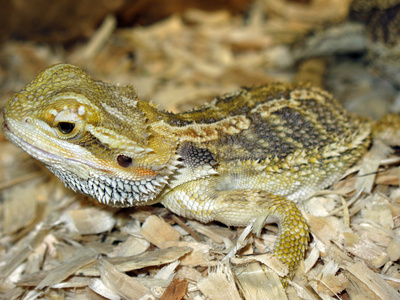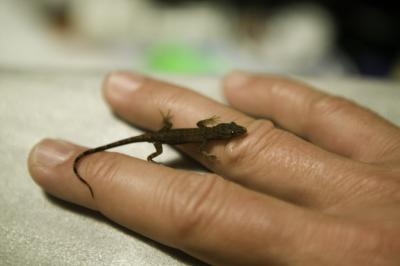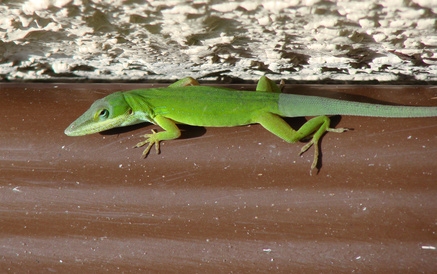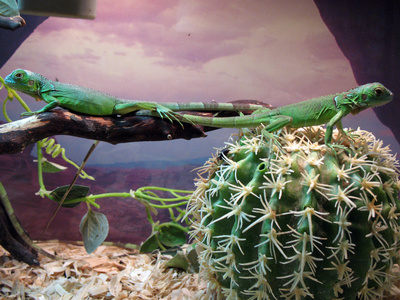
Homemade Lizard Egg Incubator. Raise your own lizard from an egg in an inexpensive homemade incubator. You can create a perfectly balanced environment of heat and humidity inside a Styrofoam incubator that you create and control. A digital thermostat display helps you monitor the heat and maintain the exact environmental conditions your lizard eggs need to hatch. Use your homemade lizard egg incubator for a home or classroom lesson in life hatching from an egg.

Build an inexpensive, no-frills lizard egg incubator using a Styrofoam cooler. The incubator needs a source of heat which can come from a small commercially produced heat pad for incubators or a light bulb and a lamp kit. You will need a small bowl or container filled with water and placed in the bottom to maintain humidity inside the incubator. Monitor the temperature inside the incubator with a digital display thermostat located outside the cooler chest.
Protect the lizard eggs from coming in contact with the heat source and the water supply by storing them in their own egg container. Inexpensive plastic shoe boxes work well for egg containers, but you can use any small plastic container. Covering egg containers with lids is not recommended.
Medium is the material your eggs will rest upon inside the egg container during incubation. The most commonly used medium is the natural mineral vermiculite, moistened with water. When heat is applied to vermiculite, it expands and forms around the incubating eggs, creating a protective insulating nest in the egg container. Perlite is another commonly used medium for a lizard egg incubator because of its high water content, which causes it to expand when heat is applied, creating insulation and moisture around the eggs.
The components of the incubator must be separated by a rack system. Use wire mesh bent into steps to elevate the egg containers and separate them from the heat pad in the bottom and the bowl of water. Position the rack system to protect the egg containers from a light bulb used for a source of heat.
Heat rises, making the bottom of the incubator the best place for the heat pad. If a light bulb is the heating source, install it towards the top of the incubator. Install the thermostat so the digital display is in a conspicuous place.
 How Do I Catch a Lizard That Is Outside?
How Do I Catch a Lizard That Is Outside?
How Do I Catch a Lizard That Is Outside?
How Do I Catch a Lizard That Is Outside?
 How to Identify Female and Male Anoles
How to Identify Female and Male Anoles
How to Identify Female and Male Anoles
How to Identify Female and Male Anoles
 Natural Habitat of a Lizard
Natural Habitat of a Lizard
Natural Ha
Natural Habitat of a Lizard
Natural Habitat of a Lizard
Natural Ha
 How to Keep Lizards Out of Your Yard in Florida
How to Keep Lizards Out of Your Yard in Florid
How to Keep Lizards Out of Your Yard in Florida
How to Keep Lizards Out of Your Yard in Florid
 How to Feed Chameleons
How to Feed Chameleons
How to Feed Cha
How to Feed Chameleons
How to Feed Chameleons
How to Feed Cha
Copyright © 2005-2016 Pet Information All Rights Reserved
Contact us: www162date@outlook.com